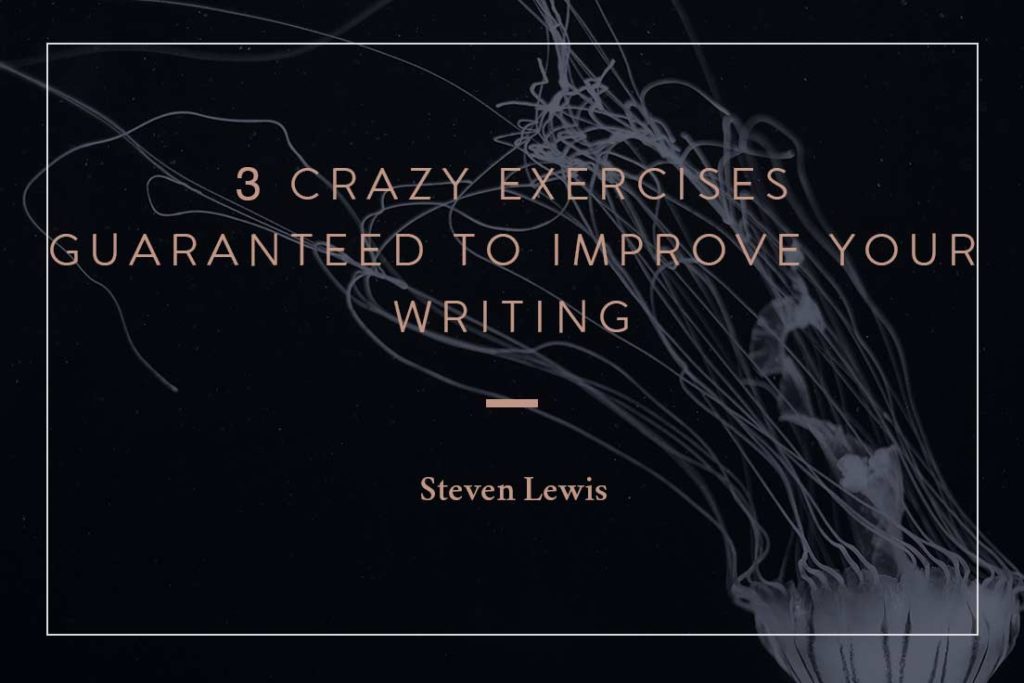3 Crazy Exercises Guaranteed to Improve Copywriting
Want to write emails, blog posts and websites that grab attention and persuade readers to act? We’ve turned a business book, an old court case and a diplomatic incident into three crazy writing exercises.
1. E is for empathy
Writing is all about the reader. That means you’ll always write better when your first thought is for the reader.
But is that your natural inclination?
Let’s find out.
- Grab a Post-It note and a marker pen.
- Stick the Post-It to your forehead. Seriously. (We promised you some crazy techniques.)
Have you done it?
Good.
Now, grab your marker pen and write an “E” on the Post-It stuck to your forehead.
Don’t read on until you’ve drawn your “E”.
This exercise is adapted from Friend & Foe by Adam Galinsky and Maurice Schweitzer.
Galinsky and Schweitzer are business school professors. The E test gave them an insight into how businesspeople think. We’re using the same graffiti challenge for a vital insight into your writing.
(If you don’t have a Post-It, don’t worry: the professors had people write directly on their foreheads, so go nuts.)
You’ve done it?
Let’s see what you got.
Did you get an “E” or an “Ǝ?. And what does each mean?
The Ǝ-type
Galinsky and Schweitzer found that those who wrote an “Ǝ” were “self-orientated”. It’s a polite way of saying the writer thinks first of himself. That’s why he wrote his “E” in a way such that he could read it. (I chose to make this writer a “he” because the Ǝ-type is disproportionately male.)
The E-type
Those who wrote an “E” were thinking about someone looking at them. They considerately wrote their “E” such that it would be the right way round for a reader looking at them. This shows empathy to the reader.
Good writers need empathy, not power. If you’re an Ǝ-type, you should take care to focus on the reader when writing anything that matters.
Sure, the exercise isn’t rigorous enough to get you through a psychology PhD, but it should get you ready for the next exercise.
This one isn’t psychological, though.
It’s legal.
2. Write like it’s 1978
The last exercise was a one-off — now you know how it works, you can’t check in on yourself by doing it again. This second exercise applies to everything you write.
In 1978 The Morning Star newspaper took the Daily Star to court, demanding it change its name to stop readers buying the wrong one at the newsstand.
The case was heard by Mr Justice Foster. He dismissed the case. In doing so, he coined a phrase that has kept lawyers around the world engaged in colourful arguments for more than forty years.
Only “a moron in a hurry” would confuse the two newspapers, said the judge.
Our second exercise involves asking whether this moron in a hurry would be confused by your writing. Before I lose you, I’m not saying your readers are morons, they’re almost certainly in a hurry and not giving you their full brainpower. They’re flicking through their emails; they’re watching TV; they’re in a noisy office (yay, for open plan).
So they’re in a hurry, not using their full brainpower… “Moron in a hurry” starts to make sense as a crude analogy?
We all know this about our readers because we’re in the same boat as they are when we’re reading a website. But it’s easy to slip into writing as if our reader has all the time in the world and our reader is giving us their full attention because our website is worth it.
The “moron in a hurry” writing test
The copywriting exercise of thinking of your reader as a close relative of the moron in a hurry will remind you to:
- Structure logically
- Keep it simple
- Make the benefit (to the reader, not you) clear throughout.
Now you’ve got a draft that does all of that, it’s time to hand your draft to an angry Russian.
3. Make it noisy
At a UN meeting in 1960, Nikita Krushchev banged his shoe on his desk to make an angry point. (That’s the version I learned at school, but it’s disputed.)
For our purposes, let’s say it happened because for this next exercise, you’re going to do a Kruschev while reading your draft aloud.
I picked the exercise up in Making Websites Win.
The authors of Making Websites Win remind us that the main point in every sentence should be positioned like a punchline — at the end of the sentence. To test whether you’ve done that, here’s what they want you to do:
Read your draft out loud and hammer your fist on the desk to emphasise the last words. If the words are in the wrong order, the hammering will sound silly:
Bad: “The hammer test reveals the words are in a suboptimal order in this sentence.”
Good: “This sentence has the words in a better order, so the hammer test works well.”
If the office didn’t give you some weird looks when you were drawing an “E” on your forehead, this should get them to pay attention.
Give any of these exercises a go
Writing on yourself, treating your readers as morons, banging your shoe on the table. Crazy exercises, yes, but they could be just the thing to get you out of your copywriting rut.
And of course, if you’d like an E-type to do it all for you…
